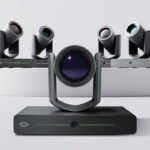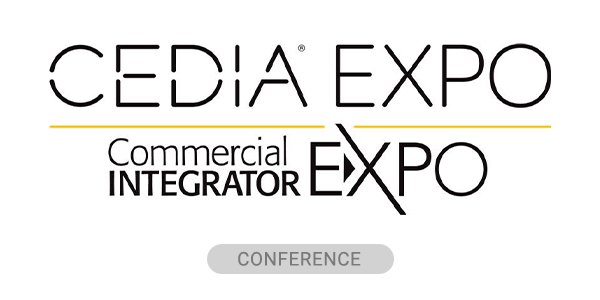Editor’s Note: This post, focusing on 2025 trends by industry leaders, originally appeared on Dec. 23, 2024. We updated it on Dec. 26, 2024.
Pro AV integrators are casting their predictions for 2025, spotlighting technology categories like large-format displays, immersive digital experiences and AI-driven collaboration tools as the most lucrative growth opportunities. However, while these innovations pave the way for profitability, businesses continue to wrestle with challenges like rising interest rates and persistent talent shortages, which threaten to slow down progress. On a brighter note, the industry is now embracing integration as mission-critical and superpower-like.
Here, we offer thoughts from the following integrators: Lionel Felix, founder and chief revenue officer, Felix Media Solutions; Julian Phillips, senior vice president, managing director, XTG, AVI-SPL; Dalton Parker, chief technology officer, TVS Pro; Tobi Tungl, chief marketing officer, CTI; Mike Abernathy, director of business resources, NSCA; Keith Yandell, VP of innovation, AVI Systems.
Commercial Integrator: Without getting into any specific vendors or branded solutions, what technology category or solution area do you see as 2025’s ripest, most profitable growth opportunity for Pro AV integrators? Explain your reasoning.
Lionel Felix, Chief Revenue Officer, Felix Media Solutions
Felix: The Internet of Things (IoT) is where it’s at.
Julian Phillips, Senior Vice President, Managing Director, XTG, AVI-SPL
Phillips: Large-format LED Displays. Analysts predict a 7% CAGR for 2025 overall, but in certain sectors it will grow faster. This is partly to do with refresh of existing installations which are now underpowered, unserviceable and expensive to run due to their higher power consumption. Newer displays with high dot pitch for 4k content, lower emissions and better serviceability will be deployed at faster rates. However, the biggest driver is due to the “generative content” revolution where creators are using AI tools to develop richer more customized content quicker at a lower cost. This will drive faster adoption with a higher ROI for enterprises, retailers, entertainment venues and hospitality.
Additionally, I predict emerging opportunities and growth in these categories: immersive experiences, equitable environments and cloud management.
Dalton Parker, Chief Technology Officer, TVS Pro
Parker: We are all facing a battle to provide an experience worthwhile enough to drive increased physical attendance. No matter what industry you may be in: corporate, education, retail, hospitality or any other industry; we need to provide an engaging experience to lure and attract in-person attendance. Advancements in creating immersive experiences are becoming more widely available and proven to drive increased engagement, participation and dwell time. Technology can play a pivotal role in creating these environments and experiences.
Closely aligned to immersive experiences are providing equitable meeting and education environments. We are living in a post-pandemic environment that has led us into blending remote and in-person participants for all types of engagements. Meeting spaces connect several people together, but the numbers of those people are scattered. A meeting may involve a large conference room with several participants, along with several individual participants. The struggle is providing an equitable experience for each individual participant, regardless of their location or proximity to fellow meeting attendees. Advancements in software features have heavily increased this ability and will continue to mature in the coming year.
Cloud management is rapidly evolving, with nearly every manufacturer offering platforms to analyze deployed products. This creates a valuable opportunity for integrators to deliver single-sign-on solutions, enabling clients to track and monitor their entire system, not just individual devices.
Technology Categories: Digital Signage, eSports, Virtual Production
Digital Signage
Pivoting from solutions to technology categories, I see Digital Signage continuing to grow and expand as we enter 2025. With a very wide range of digital signage solutions in the market, I see a need for a wave of differentiators. We have had single pane signage for a while, but the market needs growth and differentiation. Live custom content blended with real-time visualizations and renderings have great potential.
eSports
eSports presents a promising opportunity for integrators, blending live event production with high-bandwidth, low-latency video transmission. Many venues adapt shared spaces like sports or theatrical arenas into eSports arenas, opening doors for career paths in high school and college programs. Beyond boosting player participation and event involvement, eSports also fosters opportunities in game design, development, animation, broadcasting, production, marketing, and live event roles. Educational institutions could tap into this potential, creating programs to attract new students and enhance engagement among current ones.
Video Production
Video production is advancing rapidly, with virtual production (VP) leading the way. Hollywood’s success with VP highlights its artistic flexibility and creative potential. Physical studios are expanding, and virtual environments are reaching extraordinary detail, bringing imaginative worlds to life. With DVLED solutions becoming more affordable, VP workflows are poised for broader adoption, potentially extending to private and commercial studios for business applications in the near future.
Tobi Tungl, Chief Marketing Officer, CTI
Tungl: 2025 is going to be all about adaptive collaboration ecosystems. The days of designing static AV systems for fixed spaces are fading fast. Clients now demand solutions that grow with their needs…flexible, AI-driven tools that blur the line between physical and virtual environments. Think smarter video switching, AI-enhanced audio, and dynamic collaboration platforms that adapt to how people actually work, not just how a room is set up.
The big opportunity here? Helping businesses navigate this complexity. The integrators who figure out how to make it easy, by seamlessly blending hardware, software and services, will own this space. And it’s not just about selling gear anymore. Subscription models, managed services and continuous optimization will drive recurring revenue and long-term growth.
Related: Importance of Recurring Revenue in the Commercial AV Industry
Keith Yandell, VP of Innovation, AVI Systems
Yandell: We will continue to see investment in experiences. When we think of experiences, the scope won’t be limited to immersive venues stuffed to the rafters with state-of-the-art tech. Environments, plus technologies that enable the effortless exchange of ideas for local and remote participants will be paramount. Advancements in connected workplace platforms will improve the overall employee experience. Mandates aside, the decision to come into the office will be based on an elevated understanding of what’s going on. We will see investment in technologies that optimize employee experience from home to the office.
Commercial Integrator: On the business and operations side, which single factor (e.g., interest rates, talent-related issues, geopolitical stressors) poses the biggest challenge for AV businesses right now? How can business owners mitigate their downside risk?
Felix: Banks killing cash flow and making money expensive. Banks are being difficult with lines of credit and making them smaller and harder to use. Interest rates are high, but banks are being conservative and are not giving out big lines of credit like they used to. It means that it’s important for people in our industry to shop for a good local community bank that actually cares about their business.
Phillips: It is certainly not the lack of opportunity, so you can put any macro-economic concerns away. The biggest issue that faces business owners in 2025 is their personal legacy and the legacy behaviors within their business. 2025 will be a year where every business will need to experiment with new things and adopt change rapidly. Holding on to a legacy is not a recipe for success. In the words of Legacide author Richard Mulholland, “for every new thing you do, get rid of an old thing.” I am just not sure there are enough AV businesses willing to get rid of old things.
Dalton: I think the biggest factor we are watching are the new policies of the incoming administration. Uncertainty in tariff increases sound alarms of supply shortage memories from the not-too-distant past. It is no secret that most of our industry’s manufacturers are importing their goods in some capacity from countries that have could have impending increases. In the end, this will trickle down to our clients, which will affect us all the same.
Tungl: The biggest challenge right now is keeping pace with the rest of the tech world. Pro AV is no longer an isolated industry, it’s part of a much larger, faster-moving tech ecosystem that includes IT, AI and cloud. The convergence is exciting, but it’s also demanding. Clients now expect Pro AV solutions to work seamlessly with IT infrastructure, to be secure by design, and to scale as their businesses grow. That’s a steep hill to climb for companies still focused on traditional AV solutions.
To stay competitive, AV businesses need to think like tech companies. That means adopting IT-first mindsets, investing in training to upskill teams on emerging technologies, and embracing automation to stay nimble. Partnering with IT firms or cloud providers can also bridge gaps in expertise. The companies that can meet tech-world standards for speed, security and integration will thrive, while the rest risk being left behind.
Related: Pearl Technology on its Approach to Security in Integrated Systems
Yandell: With inflation in mind, if your business isn’t growing, you’re shrinking. There is no such thing as staying the same size. Some growth can be supported through added efficiencies in operations. At some point though, companies in the systems integration business need to both install and support technologies, which requires skilled technicians. Historically, the AV industry has struggled with visibility as a viable trade. Businesses can mitigate this issue by aligning with local community colleges and universities and establishing internship programs.
Mike Abernathy, Director of Business Resources, NSCA
Abernathy: As we have been saying during and after the pandemic, control what you can control. Ensure you have a dashboard with key benchmarks and metrics you are following on all projects. If you are not meeting the metrics adjust accordingly. This is the case no matter what external issues are affecting the industry. I do think talent acquisition and retention for integrators will continue to be a factor. If sales increase will integrators have the talent to design, install and service the solutions. Many integrators are still three-to-four integrators short. For mitigating risk, it is simple, be consistent on the projects you accept and consistent in the margin expectations. Don’t win a project just for topline revenue. Continue to look at your metrics if you see changes in trends and start adjusting as needed.
Commercial Integrator: What’s getting better about the AV industry these days? What seems to be getting worse and worse?
Felix: Moving to low-code, no-code programming.
Phillips: I believe we are getting a lot better at attracting younger and more diverse talent into the AV industry. I am particularly encouraged about the rise of women into senior leadership roles and these talented leaders are making a huge difference to business growth and company culture. What seems to be getting worse are “lame excuses,” the propensity to blame macro market conditions, colleagues and even customers for why people cannot achieve success in their careers. We need more honesty, self-reflection, ownership and accountability and we need less victimhood in the AV industry.
Dalton: What seems to be getting worse is the commoditization of AV components, and a lack of trust from some end users. They might have had bad experiences with another supplier, turned to in-house resources to fulfill highly complex requests that resulted in systems unable to meet their desired outcome, or are overall confused with trying to learn and educate themselves. These all present huge opportunities for us to step and be the consultants that our clients need. To be service providers, and not just storefronts, and deliver truly innovative and effective solutions.
Tungl: What’s getting better is that we’ve finally embraced integration as a superpower. AV isn’t an island anymore; it’s part of a broader tech ecosystem that includes IT, IoT and the cloud. This shift has made AV solutions smarter, greener and more accessible than ever…opening doors for businesses of all sizes to adopt next-level tech.
What’s getting worse? Decision paralysis. The sheer number of options…endless tech stacks, platforms and products has left customers feeling overwhelmed and unsure of the best path forward. This analysis paralysis often results in delayed projects or poorly defined solutions that fail to meet expectations.
The AV providers who rise above the noise, cutting through complexity with clear guidance and a strategic approach, will come out on top. Customers don’t need more choices, they need a trusted partner who can make sense of it all, provide confidence in their decisions, and deliver results that align with their goals.
Abernathy: Systems integration is now a mission critical solution for clients. This opens many doors for integrators to provide solutions that are critical to their client’s business operations. Through this there are additional services an integrator can provide, thus additional revenue.
Yandell: Overall, the technology in our industry is maturing, both hardware and software. Proprietary programming languages are going away, creating an opportunity for us to recruit talent from parallel industries. The flip side is that software continues to erode hardware, meaning, the number of physical devices required to accomplish the same result shrinks each year. This requires systems integrators to pay close attention to emerging technologies.
Commercial Integrator: Finish this sentence: 2025 will be remembered as the year that the AV industry…
Felix: Realizing TCP/IP is a key skill that can’t be avoided any more.
Phillips: Grows up.
Dalton: took the reins with opportunity and held nothing back!
Tungl: …finally put humans at the center. Sure, we’ve always talked about “user experience,” but in 2025, it’s going to be more than buzzwords. The shift toward AI-driven, anticipatory systems will change everything. AV solutions will start thinking ahead adapting to user behavior, personalizing interactions, and making technology feel less like technology and more like an extension of the people using it. That’s the game-changer.
Abernathy: …join NSCA! 😊 Have a clear workforce development strategy/plan to help integrators find and retain talent.
Yandell: Grew up










